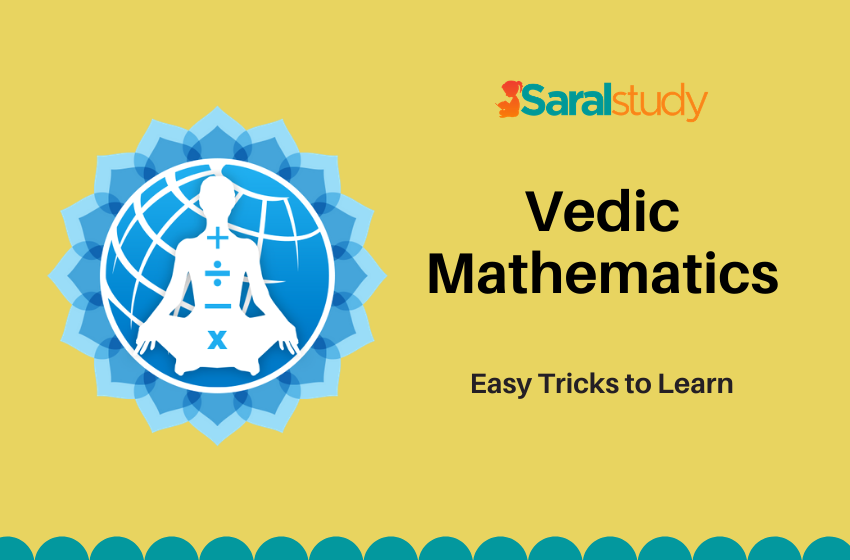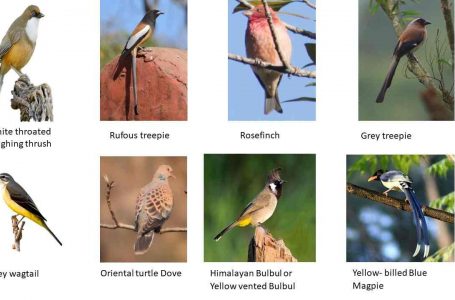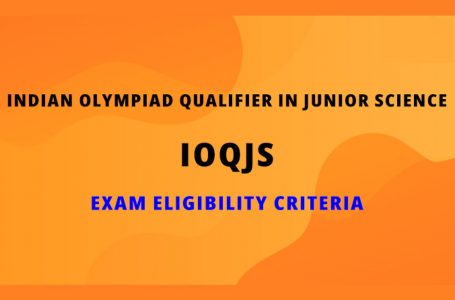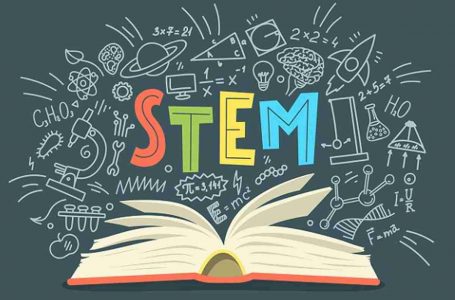Vedic Mathematics: History, Tricks, Techniques and Example

Vedic Mathematics is an assortment of Techniques/Sutras to tackle numerical mathematics in simple and quicker way. It comprises of 16 Sutras (Formulae) and 13 sub-sutras (Sub Formulae) which can be utilized for issues associated with number, algebra, geometry, calculation, conics.
Table of Contents
What is Vedic Mathematics?
Vedic Mathematics is a book written by Bharti Krishna Tirtha and this book was published in 1965. This book contains a list of mathematics techniques and all mathematical knowledge that enable students to solve mathematical arithmetic easily.
Vedic mathematics covers 16 Sutras (Formulas) and 13 Sub-Sutras (Sub-Formulas) that are very useful in dealing with Arithmetic, algebra, geometry, calculus, and conics. The tricks of addition, subtraction, multiplication, and division are based on ancient Indian techniques which are very fast and easy to learn. Vedic mathematics is called so because of its origin from Vedas. It is originated from the Atharva Vedas. It deals with the branches of engineering, mathematics, sculpture, medicines, and all other sciences. The word Veda is a Sanskrit origin which means ‘knowledge’.
Regular mathematics is tough and complex to understand while Vedic Mathematics is very simple and easy to learn.
History of Vedic Mathematics
Shri Bharathi Krishna Tirthaji Maharaj was born in March 1884 in the Puri town of Orissa state. He was awesome in subjects like maths, science, humanities and was phenomenal in Sanskrit language. His inclinations were likewise in mysticism and intercession. Indeed when he was rehearsing meditation in the forest close to Sringeri, he rediscovered the Vedic sutras. He guarantees that these sutras/methods he gained from the Vedas particularly ‘Rig Veda’ straightforwardly or in a roundabout way and he instinctively rediscovered them when he was rehearsing meditation for a very long time.
Later he wrote the sutras on the compositions but were lost. At long last in year 1957, he wrote starting volume of 16 sutras which is called as Vedic Mathematics and wanted to write different sutras later. In any case, soon he created cataract in both of his eyes and pass away in year 1960.
Benefits of Vedic Mathematics
The main benefits of Vedic Maths are:
Less to remember
Vedic Mathematics requires only limited learning work as it has tables only up to 9. Students have to memorize only 9 tables which are sufficient for all the mathematical techniques.
Saves Time
Vedic Mathematics is the simplest way of solving mathematical problems. It involves easy methods that require very little time. Students can answer more questions is very less time. This mathematical technique is free from finger counting and no need for scratch work.
More Confidence and Concentration
Vedic mathematics enables students to concentrate more and easy understanding leads to a boost in confidence. Vedic Mathematics includes very simple and straight forward techniques. Students learn mental calculations with Vedic mathematics. The student’s mind remains alert because of elements of choice and flexibility.
Personality Development
Vedic maths techniques help in arising the spiritual side of the personality. It increases the creativity of the students and enables slow learners to grasp the concepts easily.
Brain Development
Vedic Mathematics allows students to think multi-dimensionally. It also enables students to understand and links between different branches of mathematics. It also provides the checking procedures to the students to cross-check their solutions.
Vedic Mathematics Inclusion Inboard/Courses
- Haryana has become the first Indian state in which they work towards formalizing the instruction of Vedic mathematics at the school level. The state plan that from the next academic session they introduce the ancient system at the school level and they also trained 1500 teachers across the district to lead the effort. Haryana state council of education research and training also arranges the training workshops with 70 trainers leading the exercise.
- Madhya Pradesh Government recommended the inclusion of Vedic Maths in CBSE Schools. The state has decided to introduce Vedic maths in NCERT books in the state-run schools.
- In 2018, UP Board also introduced Vedic maths as an optional subject for class 9th to 12th. The Vedic maths book was named “Bharat ka Paramparagat Ganit Gyan”.
It is a great initiative to introduce students to Vedic mathematics because it can be very helpful for board students. It helps them to reduce the calculation time during the board exam as the students need to solve a large number of questions in a limited time.
Students can solve any difficult and time-consuming maths problems easily with minimal chances of errors. Usually, students face difficulty in solving problems related to polynomial functions and quadratic sums in CBSE and ICSE Boards. The Vedic Maths enables students to solve them proficiently. The Vedic Maths tricks and techniques can help the Board students to score well.
Few Examples of Vedic Mathematics
Below are the few examples of Vedic Maths are:
Example 1: 220 + 384 + 77 + 18 =?
Solution: Firstly break the numbers as per their place value
200 + 300 = 500
20 + 80 + 70 + 10 = 180
4 + 7 + 8 = 19
Repeat the process
500 + 100 = 600
80 + 10 = 90
And the unit place we have 9
Now, 600 + 90 + 9 = 699
699 is the answer
Example 2: 2354 x 9999 = ?
Solution: By one less than the previous one.
By using the above formula, we can do the same multiplication operation whose number in one part is only 9, 99, 999, 9999 so on
2354 x 9999
= (2354-1) / {(999 (9+1) – 2354)}
= 2353 / (999 10 – 2354)
= 2353 / 7646
= 23537646 (Answer)
Example 3: 38 x 12 = ?
Trick:
Step 1- Multiply the left side – 3 x 1 = 3
Step 2- Multiply the right side – 8 x 2 = 16
Step 3 – Middle Part (Cross multiplying both side) – (3 x 2) + (8 x 1) = 6 + 8 = 14
First Part | Middle Part | Last Part
3 | 14 | 16
(3+1) | (4+1) | 6
456 (Answer)
Example 4: Square of 98 (982) =?
Solution: Do the reductions from the nearest base number and keep the square of the same reduction. This is the correct result naturally emanating from the Nikhilam Sutra.
982 = (98 – 2) / 22 Base = 100
= 96 / 04 Reduction = 100-98 =2
= 9604 (Answer)
16 Principles (Sutras) of Vedic Mathematic and Sub-Sutra
| Name / Sutra | Corollary / Sub-Sutra | Meaning |
| Ekadhikena Purvena (एकाधिकेन पूर्वेण) | Anurupyena | By one more than the previous one. |
| Nikhilam Navatashcaraman Dashatah (निखिलं नवतश्मचरमं दशतः) | Sisyata Sesasamjnah | All from 9The last from 10 |
| Urdhava – Tiryagbyham (ऊर्ध्वतिर्यग्भ्याम्) | Adyamadyenantyamantyena | Vertically and crosswise. |
| Paravartaya Yojayet (परावर्त्य योजयेत्) | Kevailash Saptakam Gunyat | Transpose and adjust. |
| Shunyam Saamyasamuccaye (शून्यं साम्यसमुच्चये) | Vestanam | When the sum is the same that sum is zero. |
| Anurupye Shunyamanyat (आनुरुप्ये शून्यमन्यत्) | Shunuya Anayat | If one is the ratio, the other is zero. |
| Sankalana- Vyavakalanabhyam (संकलन व्यवकलनाभ्यां) | Yavadunam Tavadunikritiya Varga Yojayet | By addition and subtraction. |
| Purana Puranabyham (पूरणापूरणाभ्यां) | Antyayordashakepi | By the completion. |
| Chalana – Kalanabyham (चलनकलनाभ्याम्) | Antyayoreva | Similarities and differences. |
| Yavadunam (यावदूनम्) | Samuccayagunitah | The extent of its deficiency. |
| Vyashtisamasthi (व्यष्टिसमष्टिः) | Lopanasthapanabhyam | Part and whole. |
| Shesanyankena Charamena (शेषाण्यङ्केन चरमेण) | Vilokanam | Remainder by the last digit. |
| Sopaantyadyamantyam (सोपान्त्यद्वयमन्त्यम्) | Gunitasamuccayah | The ultimate and penultimate. |
| Ekanyunena Purvena (एकन्यूनेन पूर्वेण) | Dhyajanka | By one less than the previous one. |
| Gunitasamuchyah (गुणितसमुच्चयः) | Dwandwa Yoga | The product of some is equal to the sum of the product. |
| Gunakasamuchyah (गुणकसमुच्चयः) | Adyam Antyam Madhyam | The factors of the sum is equal to the sum of the factors. |
Criticism
Over the years the authenticity of the solutions of the book has been challenged over and over again. Although Tirthaji claimed to have deduced these sutras from the Vedas, none of these sutras were found to any extent of Vedic literature. However some professors and researchers believe that although none of these sutras were in the standard editions of the Parishishta, they might have occurred in Tirthaji Down Parishishta.
The first of the editors of the book Prof. Vasudeva Saran Agrawala too has indicated the fact that these techniques in no way date back to the Vedic period. A similar conclusion has also been given S. G. Dani believes that all these techniques are not at all unique and that similar systems can be found in Lester Meyers’s book High-speed Mathematics that was published 10 years before Tirthaji had started writing his i.e. in 1947.
Conclusion
Vedic mathematics is the source of the modern mathematics, that we are studying now in schools and universities. We can discover numerous helpful methods to solve the mathematics problem through Vedic Mathematics. Vedic Maths is an excellent practice that helps to sharpen our brain and improves the calculation power.






1 Comment
Please do not use our company logo in your article picture, as it gives rise to copyright issue. Kindly remove our logo from the above picture.